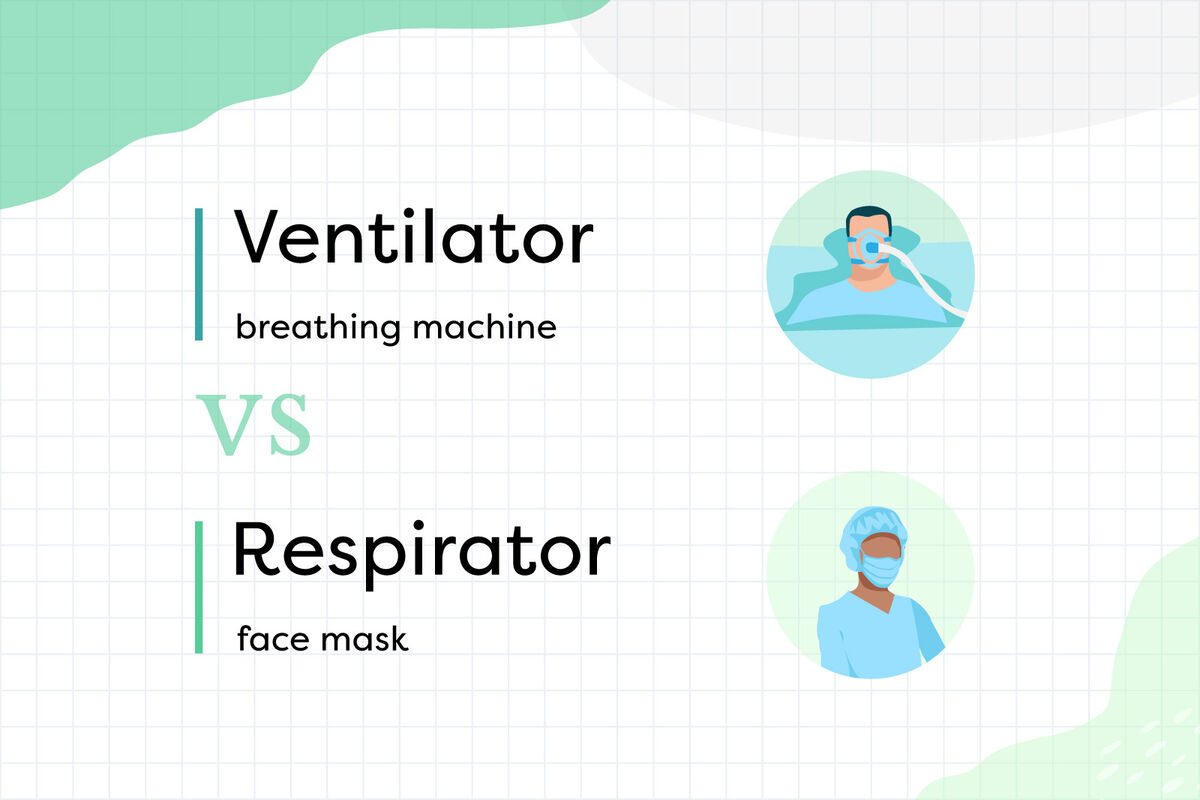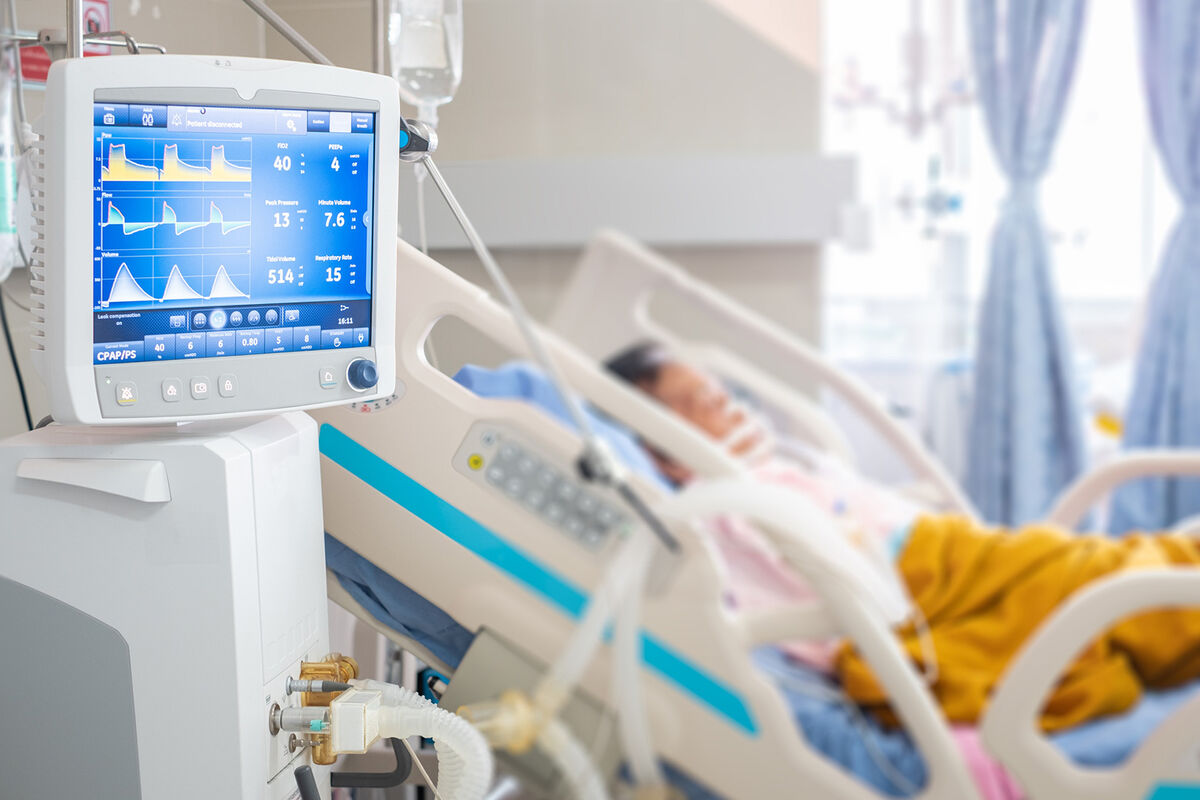
When you’re in the hospital and feeling scared, medical words tend to blend together. You have a positive prognosis — is that the same as diagnosis? He thinks you need an antiviral — is that like a vaccine? That’s why it’s important to learn the differences between similar words, such as ventilator and respirator, before you’re face-to-face with bad news. (Or maybe it’s good?)
Ventilators Are Mechanical

A ventilator is a breathing machine that supplies oxygen to your body. It includes the Latin root vent, meaning “air,” like the word ventilate (“to blow fresh air through”), and is also known as a life support machine. Air can travel into your body through a tight-fitting mask, or in more serious situations, a tube down your throat.
Scenarios that involve a ventilator include:
a patient has a collapsed lung and can’t breathe successfully on their own
when a patient is sedated during (or after) surgery because their lungs are paralyzed
a patient has a brain injury or is in a coma
a patient has a virus like COVID-19, which fills their lungs with fluid
Respirators Are Masks

Respirator comes from the Latin respirare (“to breathe in and out”) and is also called a respiratory mask, N95, KN95, APR (Air-Purifying Respirator), or ASR (Air-Supplying Respirator). A respirator both filters contaminants from the air and blocks any contaminants the wearer may spread into the air.
Unlike a ventilator, a respirator does not indicate a very serious medical condition. You may use a respirator when:
avoiding catching an airborne illness
avoiding spreading an airborne illness
the air contains fine particles (such as smoke from a wildfire or large amounts of dust)
the air contains dangerous particles (such as toxic chemicals or air pollution)
But Also, They Can Be the Same Thing
It’s easy to see why people mix up ventilator and respirator — after all, vent means “air” and respire means “breathe,” and both mechanisms include air and help you breathe. But the mix-up often goes so far that ventilator and respirator become synonymous (everywhere outside the medical world), and a doctor mentioning a respirator may have a patient worrying that they’re about to be put on life support.
To make sure you know the difference, consider the phrasing around each word. For example:
You’re put on a ventilator.
You wear a respirator.
A ventilator keeps you alive.
A respirator keeps you safe.
If a friend calls to tell you that their grandmother is on a respirator, they probably mean a ventilator. Knowing the difference between the phrasing can help you quickly understand what they mean.
Take Care of Yourself (And Your Vocabulary)
Medical terminology can be confusing, but it’s not impossible to understand. Learn the differences between more tricky medical words: